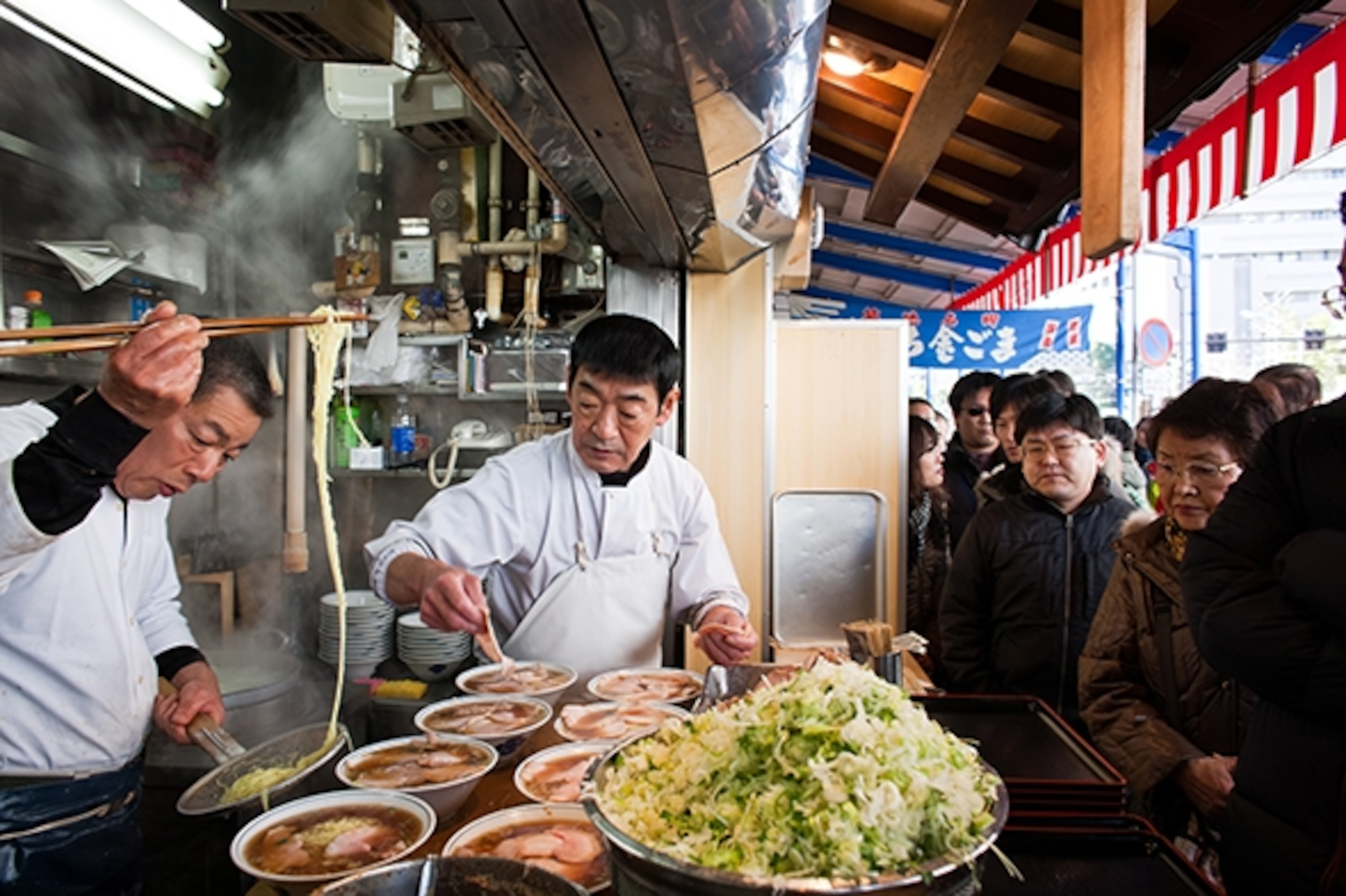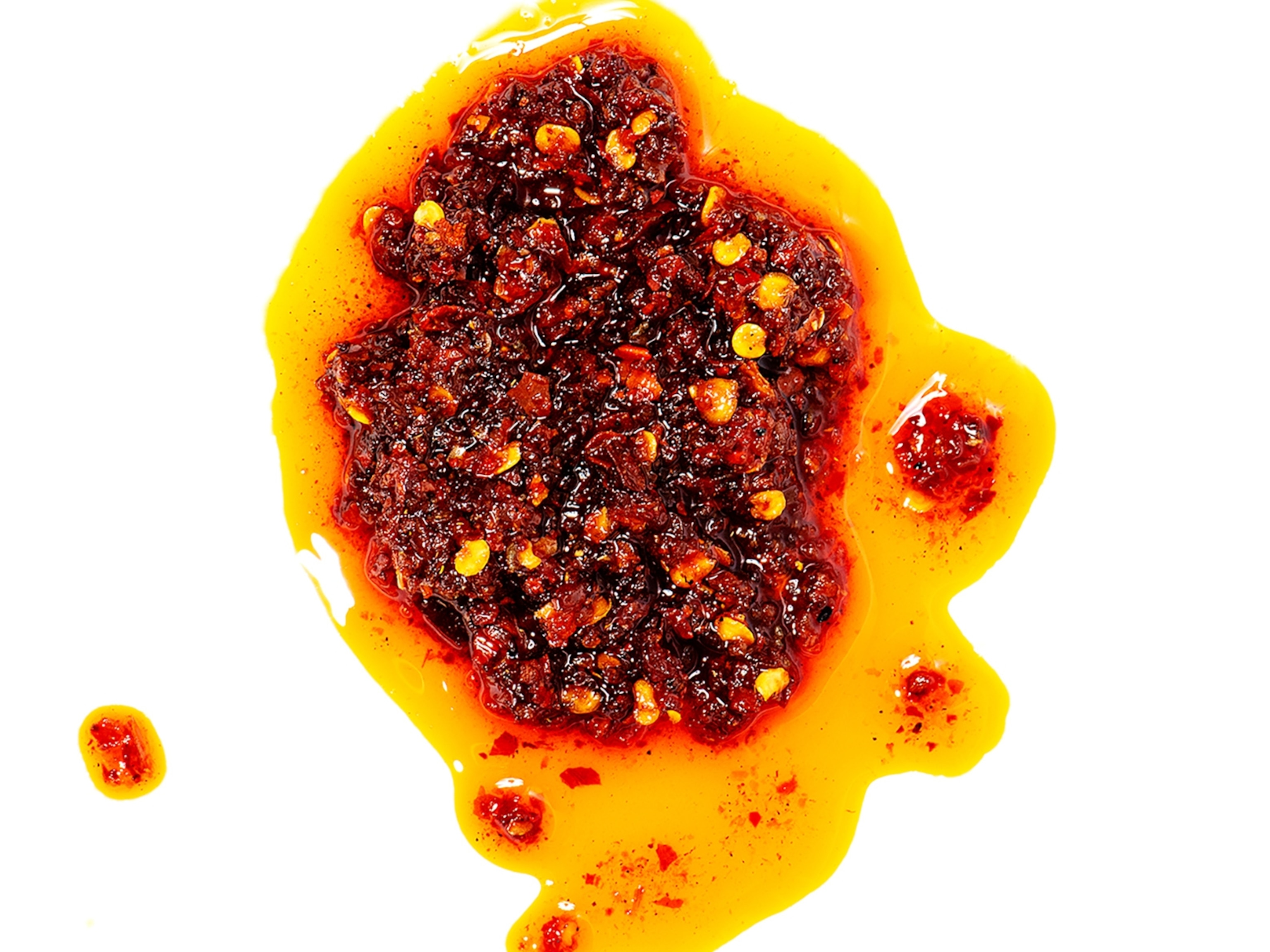
The High Art of Ramen in Tokyo
When someone mentions ramen, you probably think of those store-bought dried noodles you bring to life with boiling water and a packet of spices.
In Tokyo, ramen noodle soup is not fast food; it’s an art form.
Complexly flavored, the perfect bowl of ramen combines clear broth with wheat noodles, slices of roasted pork, seasoned bamboo shoots, and chopped green onions. This aromatic stock—meat, vegetable, or seafood—contains up to 40 ingredients and is simmered for hours. The noodles, from thin to wavy, are aged for up to ten days in a cool place to achieve their peak flavor and texture.
It’s thought that missionaries brought ramen from China to Japan in the 17th century. But it wasn’t until 1910 that Japan’s first ramen shop—Rairaiken—opened in Tokyo’s Asakusa district, an area of merchants and artisans. It served simple Chinese noodle soup modified with traditional Japanese ingredients—dried fish, seaweed, and soy sauce.
Today, the nation boasts more than 30 regional varieties of ramen, and nearly 4,000 places sell it in Tokyo alone. The dining routine never varies: Wait in line, order, squeeze into a seat, and slurp quickly so the next person can take your place.
In Tokyo, locals line up at Inoue’s outdoor stand near Tsukiji Market for classic shoyu (soy-based ramen), its golden noodles nestled in auburn broth and topped with pork and bamboo shoots. Sixty-year-old Raishuken, in Asakusa, adds wonton-men to its menu, silky dumplings floating over traditional ramen. In a narrow alley in Jimbocho, the tiny Sabuchan serves hanchan, the ultimate ramen and fried rice combo.

> About the Author: Daisuke Utagawa
Home: After bouncing around the world, I’m settled in D.C., where I’m the co-owner of a sushi bar as well as a new ramen house and izakaya [Japanese pub].
On Tokyo time: When I travel to Tokyo, I have a routine. I usually arrive around dinner time, so I go to my favorite izakaya, followed by a 24-hour sauna for a good scrub: my cure for jet lag. The next morning I usually wake up at 4 a.m. and hungry—my belly is still on D.C. time—so I’ll go to Tsukiji fish market.
Miso hungry: I’ve never seen anywhere else in the world the level of obsession with food that exists in Japan. The best tendon [a tempura rice bowl] I’ve ever had was at Masaru in the Asakusa district of Tokyo. And instead of the superformal and expensive sushi spots, I prefer the seven-seat Sushi Ochiai in Ginza—classic, proper Edo-style sushi in a relaxed atmosphere.
Soul food: The more I travel and eat, the more I’m reminded that the best cooking is the kind that understands the ingredients rather than tries to make them something they aren’t, in an acrobatic sort of way. The creative chefs I find most intriguing are those who never forget the soul of the food.
This piece, written by Daisuke Utagawa, appeared in the February/March issue of National Geographic Traveler magazine.
You May Also Like
Go Further
Animals
- How can we protect grizzlies from their biggest threat—trains?How can we protect grizzlies from their biggest threat—trains?
- This ‘saber-toothed’ salmon wasn’t quite what we thoughtThis ‘saber-toothed’ salmon wasn’t quite what we thought
- Why this rhino-zebra friendship makes perfect senseWhy this rhino-zebra friendship makes perfect sense
- When did bioluminescence evolve? It’s older than we thought.When did bioluminescence evolve? It’s older than we thought.
- Soy, skim … spider. Are any of these technically milk?Soy, skim … spider. Are any of these technically milk?
Environment
- Are the Great Lakes the key to solving America’s emissions conundrum?Are the Great Lakes the key to solving America’s emissions conundrum?
- The world’s historic sites face climate change. Can Petra lead the way?The world’s historic sites face climate change. Can Petra lead the way?
- This pristine piece of the Amazon shows nature’s resilienceThis pristine piece of the Amazon shows nature’s resilience
- Listen to 30 years of climate change transformed into haunting musicListen to 30 years of climate change transformed into haunting music
History & Culture
- Meet the original members of the tortured poets departmentMeet the original members of the tortured poets department
- Séances at the White House? Why these first ladies turned to the occultSéances at the White House? Why these first ladies turned to the occult
- Gambling is everywhere now. When is that a problem?Gambling is everywhere now. When is that a problem?
- Beauty is pain—at least it was in 17th-century SpainBeauty is pain—at least it was in 17th-century Spain
Science
- Here's how astronomers found one of the rarest phenomenons in spaceHere's how astronomers found one of the rarest phenomenons in space
- Not an extrovert or introvert? There’s a word for that.Not an extrovert or introvert? There’s a word for that.
- NASA has a plan to clean up space junk—but is going green enough?NASA has a plan to clean up space junk—but is going green enough?
- Soy, skim … spider. Are any of these technically milk?Soy, skim … spider. Are any of these technically milk?
Travel
- Dina Macki on Omani cuisine and Zanzibari flavoursDina Macki on Omani cuisine and Zanzibari flavours
- How to see Mexico's Baja California beyond the beachesHow to see Mexico's Baja California beyond the beaches
- Could Mexico's Chepe Express be the ultimate slow rail adventure?Could Mexico's Chepe Express be the ultimate slow rail adventure?




